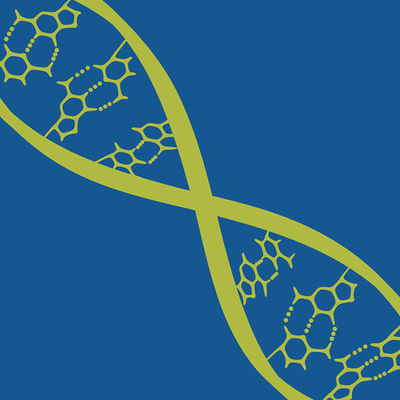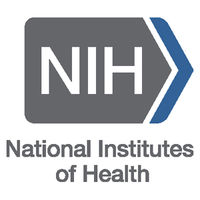预约演示
更新于:2025-08-14

Rutgers State University of New Jersey
更新于:2025-08-14
概览
标签
肿瘤
感染
皮肤和肌肉骨骼疾病
小分子化药
单克隆抗体
多肽偶联药物(PDC)
疾病领域得分
一眼洞穿机构专注的疾病领域
暂无数据
技术平台
公司药物应用最多的技术
暂无数据
靶点
公司最常开发的靶点
暂无数据
| 排名前五的药物类型 | 数量 |
|---|---|
| 小分子化药 | 20 |
| 化学药 | 2 |
| ASO | 1 |
| 双特异性NK细胞接合器 | 1 |
| CAR-NK | 1 |
关联
32
项与 Rutgers State University of New Jersey 相关的药物靶点 |
作用机制 VEGF-A抑制剂 [+1] |
在研机构 |
原研机构 |
最高研发阶段批准上市 |
首次获批国家/地区 美国 |
首次获批日期2004-02-26 |
靶点 |
作用机制 微管蛋白抑制剂 |
最高研发阶段批准上市 |
首次获批国家/地区 美国 |
首次获批日期1992-12-29 |
靶点 |
作用机制 PRKAB1激活剂 |
最高研发阶段批准上市 |
首次获批国家/地区 中国 |
首次获批日期1992-01-01 |
736
项与 Rutgers State University of New Jersey 相关的临床试验NCT05928247
Manualized Assessment and Treatment Model of Challenging Behavior
Despite decades of mounting single-case-design evidence for the efficacy of applied behavior analysis (ABA) and other approaches for the assessment and treatment of challenging behavior, an evidence-based comprehensive approach remains to exist. The current study will collect test the efficacy of a standardized manual for assessing and treating challenging behavior for individuals with severe and mild challenging behavior.
开始日期2026-01-30 |
申办/合作机构 |
NCT06814184
Improving Glycemic Control Among Underserved Patients With Insulin-treated Type 2 Diabetes Through Nurse-led, App-based Behavioral Intervention
This 12-month pilot tests a nurse-led, app-based intervention to improve diabetes self-management for low-socioeconomic status patients. It includes MyChart messing to give education, phone help on problem-solving with clinicians, and using a diabetes app to track data. The study aims to enhance self-management behaviors through health technology.
开始日期2026-01-02 |
NCT07094542
Temporo-masseteric Nerve Block in Post-wisdom Tooth Extraction Pain- a Randomized Study
The proposed design is a triple-blind, placebo-controlled randomized prospective phase II trial to assess the feasibility of employing the Temporo-masseteric Nerve Block (TMNB) injection to decrease jaw muscle pain, overall pain, improve mouth opening and minimize pain medication consumption. 80 participants undergoing lower third molar removal under sedation will be enrolled. Those who develop significant jaw muscle pain on the following day will be randomized to receive either the TMNB injection or a placebo. Daily ecological momentary assessments (EMAs) will be collected reflecting elements of patient experience for all participants. On Day 8, participants return for an end-of-study evaluation and return their unused pain medications. Up to 40 participants who are randomized to receive TMNB/placebo will be recruited to participate in a qualitative interview regarding their experience.
开始日期2025-11-01 |
申办/合作机构 |
100 项与 Rutgers State University of New Jersey 相关的临床结果
登录后查看更多信息
0 项与 Rutgers State University of New Jersey 相关的专利(医药)
登录后查看更多信息
78,799
项与 Rutgers State University of New Jersey 相关的文献(医药)2025-12-01·Current Urology Reports
Rethinking Gleason 6 Prostate Cancer: Embracing PrNLMP for Precision and Progress
Review
作者: Arap, Wadih ; Kovac, Evan ; Weiss, Robert E
2025-12-01·ENDOSCOPY
Unwrapping the problems: endoscopic repair of fundoplication fistula
Article
作者: Ma, Michael ; Trindade, Arvind J. ; Benias, Petros C.
2025-12-01·Current Cardiology Reports
Cardiovascular Care in Women Veterans: An Updated Profile
Review
作者: Parashar, Susmita ; Gilani, Nimra ; Dew, Michelle L ; Cotiga, Delia ; Mahana, Ingy ; Le, D Elizabeth ; Mei, Pristine
PURPOSE OF REVIEW:
To provide an updated summary of the burden and care of cardiovascular disease in women veterans.
RECENT FINDINGS:
Women veterans can develop atherosclerotic cardiovascular disease at a much earlier age of 30 years compared to non-veteran women. Those who experienced chronic stress and environmental exposures were more likely to develop early menopause and premature coronary artery disease. Despite major improvements in therapeutic options for cardiovascular disease, the mortality rate of women veterans continues to rise while that of their counterparts has steadily decreased. Women veterans is the fastest growing group of the veteran population. This is a unique and diverse population with a complex intersection of traditional, sex-specific, and military service-related risks for cardiovascular disease. They have a higher prevalence of both traditional and non-traditional risk factors compared to non-veteran women and are especially impacted by depression, post-traumatic stress syndrome, military sexual trauma, and housing instability.
485
项与 Rutgers State University of New Jersey 相关的新闻(医药)2025-08-12
Chief Guest Michael E. Zwick Highlights Innovation and Collaboration in Diagnostics
Through partnerships with institutions like Rutgers, companies like RICOVR can access world-class facilities and expertise, accelerating innovation and moving forward faster.”
— Michael E. Zwick , Senior Vice President for Research at Rutgers University
PRINCETON, NJ, UNITED STATES, August 12, 2025 /
EINPresswire.com
/ --
RICOVR
Healthcare, a leader in rapid, saliva-based point-of-care diagnostics, successfully showcased the functionality of its flagship testing device at its highly anticipated First Look event. The milestone gathering brought together investors, partners, and industry stakeholders to witness firsthand the company’s cutting-edge platform designed to transform workplace safety and healthcare screening.
The event’s Chief Guest, Michael E. Zwick, Senior Vice President for Research at
Rutgers
University, commended RICOVR’s role in driving innovation and economic growth in New Jersey. ". RICOVR exemplifies how research-based companies can translate scientific advancements into practical applications. Through partnerships with institutions like Rutgers, companies like RICOVR can access world-class facilities and expertise, accelerating innovation and moving forward faster. This kind of collaboration is at the heart of what a 21st-century research university should be."
As cannabis legalization expands, the need for more accurate and relevant testing methods has become critical. Traditional approaches, such as urine testing, can detect cannabis use from days or weeks prior, often leading to unfair outcomes. Breath-based THC tests remain inconclusive and cannot reliably detect edibles. RICOVR’s saliva-based platform addresses these gaps by focusing on recent use detection, providing a more precise indicator of recent use detection and enabling fairer, more effective safety decisions.
Attendees were given a live demonstration of the device’s rapid, non-invasive testing capabilities, including its ability to detect recent use of THC in minutes - enabling immediate, on-the-spot decision-making for safety-sensitive industries. The showcase also highlighted the company’s progress toward commercialization and its plans to expand into additional diagnostic applications, such as preeclampsia detection.
“We’re incredibly proud of what our team has accomplished,” said Dr. Himanshu Bhatia, CEO of RICOVR. “This event was an opportunity not only to demonstrate the technology in action but also to share our vision for a safer, more efficient future in diagnostics. The need for accurate, real-time testing solutions has never been greater, especially as workplace safety and public health challenges evolve.”
About RICOVR Healthcare
RICOVR Healthcare is an award-winning, VC-backed diagnostics company specializing in saliva-based point-of-care testing. With its patented XALIVA
®
platform, RICOVR delivers rapid, accurate, and portable solutions for workplace safety, healthcare, and beyond.
About Rutgers, The State University of New Jersey
Rutgers, The State University of New Jersey, is a leading national research university and the state of New Jersey’s preeminent, comprehensive public institution of higher education.
Established in 1766, the university is the eighth-oldest higher education institution in the United States. More than 69,000 students and 27,000 faculty and staff learn, work, and serve the public at Rutgers-New Brunswick, Rutgers-Newark, Rutgers-Camden, and Rutgers Health.
Marketing
Ricovr Healthcare
email us here
Visit us on social media:
LinkedIn
Legal Disclaimer:
EIN Presswire provides this news content "as is" without warranty of any kind. We do not accept any responsibility or liability
for the accuracy, content, images, videos, licenses, completeness, legality, or reliability of the information contained in this
article. If you have any complaints or copyright issues related to this article, kindly contact the author above.

诊断试剂
2025-08-07
Arthur “Art” DiPatri, MD, a veteran Chicago pediatric neurosurgeon, joined the
University of Chicago Medicine
on August 1 as Director of Pediatric Neurosurgery at
Comer Children’s Hospital
.
DiPatri will also serve as Chief of Pediatric Neurosurgery for the
Chicagoland Children’s Health Alliance
— a group of pediatric experts from Comer, Advocate Children’s Hospital and Pediatrics at Endeavor Health.
He’ll work primarily on UChicago Medicine’s Hyde Park’s campus.
DiPatri has extensive experience treating
craniosynostosis
,
pediatric brain tumors
,
hydrocephalus
,
spina bifida
, traumatic brain injuries and
craniofacial disorders
. He plans to build on Comer’s expertise in these areas and help the hospital become a “destination program” for craniosynostosis and neuro-oncology patients.
“There are incredible opportunities for growth in the pediatric service line,” DiPatri said, noting the technological advances that are rapidly advancing care, including high-tech imaging, navigation tools and robot-assisted surgery.
“Now, you can do things endoscopically (minimally invasively) at even two months of age and have incredible results.”
DiPatri, a New Jersey native, earned his medical degree at Rutgers University and worked at children’s hospitals in Boston and Philadelphia before becoming Chief of Pediatric Neurosurgery at the University of Maryland Medical System.
He was recruited in 2003 to be a pediatric neurosurgeon at Children’s Memorial Hospital in Chicago (now Lurie Children’s) where he worked for the past 22 years. He is also affiliated with Shriner’s Children’s Chicago.
DiPatri calls his career spent working with children “incredibly rewarding” and has maintained strong bonds with many families for years after treatment. It’s not uncommon, he said, to be invited to graduations and family celebrations.
“To help families through a crisis is the part that I enjoy, but it’s also a lot of responsibility,” he said. “When mom and dad come to you with their pride and joy, and say ‘We can’t fix this, take care of this for us,’ that’s something I take very seriously.”
Legal Disclaimer:
EIN Presswire provides this news content "as is" without warranty of any kind. We do not accept any responsibility or liability
for the accuracy, content, images, videos, licenses, completeness, legality, or reliability of the information contained in this
article. If you have any complaints or copyright issues related to this article, kindly contact the author above.
高管变更
2025-08-05
NEWARK, N.J., Aug. 5, 2025 /PRNewswire/ -- New Jersey Innovation Institute (NJII), a subsidiary of the New Jersey Institute of Technology (NJIT), is pleased to announce the appointment of Chrissy Buteas and Elisa Charters to NJII's Board of Directors.
Continue Reading
New Jersey Innovation Institute (NJII) Appoints Elisa Charters and Chrissy Buteas to their Board of Directors
Post this
NJII Welcomes Chrissy Buteas and Elisa Charters
Chrissy Buteas is the President & CEO of the HealthCare Institute of New Jersey (HINJ), which serves as the trade association for leading research-based biopharmaceutical and medical technology companies in New Jersey. Buteas has held significant leadership positions throughout her career, including VP of Government Affairs at Optimum, Chief Government Affairs Officer of the New Jersey Business & Industry Association (NJBIA), and President and CEO of the Home Care & Hospice Association of New Jersey.
Her board service includes roles with Middlesex College, New Jersey Innovation Institute (NJII), Thanexus, Inc., the National Association of Corporate Directors (NACD-NJ), and several other organizations. Buteas holds an MPA from Rutgers University-Newark and a BA from Rowan University.
Buteas stated, "New Jersey's innovation economy depends on strong collaboration among diverse partners—from academia and research institutions to private industry, state government, and economic development agencies. As HINJ works to strengthen the research ecosystem through ongoing partnerships, I am honored to have the chance to serve on the board of New Jersey Innovation Institute (NJII). Together, we will continue to advance our state's technology and innovation initiatives."
Elisa Charters is a seasoned executive strategist with over 30 years of public-sector finance and transactional experience, specializing in the negotiations of major economic development and regional infrastructure. Her highlights include leading valuation of the Port Authority of NY & NJ's 23 million sq. ft. of mixed-use portfolio, managing acquisitions in the redevelopment of One World Trade Center post 9/11 and assessing revenue programs as Assistant Comptroller of Port Commerce.
Charters transitioned from government to entrepreneurship, founding EAC Business International LLC and more recently Juegos AI Lab, focusing on application programming interfaces and agentic AI modeling. A passionate advocate for education and underserved communities, she co-founded Latina Surge National non-profit, scaling it from a grassroots organization to an international platform.
Charters is an alumna of NJIT, holding dual degrees in Environmental Science, and a graduate degree in International Finance and Business from Columbia University.
When asked about the future of NJII, Charters remarked, "The global AI race is progressing at extreme speed, and this is New Jersey's AI moment. NJII is our East Coast Gateway to transformative growth across key innovation sectors, uniquely supported by NJIT, our premiere R1 translational research institution. State-of-the-art technology and the most prepared technical workforce will forge economic advancement and quality of life in New Jersey for decades to come."
NJII President, Michael Johnson, Ph.D., expressed enthusiasm about Buteas and Charters' appointments: "We are thrilled to welcome Chrissy Buteas and Elisa Charters to the NJII Board of Directors. Their extensive backgrounds in healthcare and economic development will be invaluable as we continue to drive innovation and foster collaboration across New Jersey's key sectors. Together, we will enhance our mission to accelerate technology and support our state's growth, ensuring New Jersey remains at the forefront of the innovation economy."
Under Johnson's leadership, NJII has made significant strides, including the recent launch of the NJII Venture Studio, the state's seventh Strategic Innovation Center (SIC) focused on high technology and IT. NJII has also strengthened its role in workforce development by expanding training programs in cutting-edge fields such as AI, advanced manufacturing, and biotechnology, creating hands-on opportunities for students and professionals alike
About NJII
The New Jersey Innovation Institute (NJII) is a 501(c)(3) non-profit wholly owned by NJIT. Founded in 2014, NJII leverages the vast resources of an R-1 research university, deep industry and government partnerships, and a proven track record of building industry-centric ecosystems to accelerate technology, foster innovation, and drive workforce development. With over $330 million in revenue across four divisions—AI/ML, Defense, Entrepreneurship, and Healthcare. NJII delivers measurable economic impact across New Jersey and beyond.
Learn more:
About NJIT
New Jersey Institute of Technology (NJIT) is the leading producer of technological talent and knowledge in New Jersey, serving as a nexus of innovation. NJIT is the only polytechnic university classified as an R1 (highest level) Carnegie Classification research university and is designated as both an Asian American and Hispanic-serving institution. The New York Times college ranking tool rates NJIT No. 1 nationally among all public universities for high alumni earnings, economic mobility, and academic profile. Additionally, NJIT is ranked among the top 100 universities in the country for alumni mid-career earnings and is recognized as a Best Value College by The Princeton Review.
SOURCE New Jersey Innovation Institute
WANT YOUR COMPANY'S NEWS FEATURED ON PRNEWSWIRE.COM?
440k+
Newsrooms &
Influencers
9k+
Digital Media
Outlets
270k+
Journalists
Opted In
GET STARTED
高管变更
100 项与 Rutgers State University of New Jersey 相关的药物交易
登录后查看更多信息
100 项与 Rutgers State University of New Jersey 相关的转化医学
登录后查看更多信息
组织架构
使用我们的机构树数据加速您的研究。
登录
或

管线布局
2025年08月25日管线快照
管线布局中药物为当前组织机构及其子机构作为药物机构进行统计,早期临床1期并入临床1期,临床1/2期并入临床2期,临床2/3期并入临床3期
药物发现
6
20
临床前
临床1期
1
3
临床2期
临床3期
2
32
其他
登录后查看更多信息
当前项目
| 药物(靶点) | 适应症 | 全球最高研发状态 |
|---|---|---|
盐酸依米丁 ( EGFR ) | 新型冠状病毒感染 更多 | 临床2/3期 |
贝伐珠单抗 ( VEGF-A ) | 直肠癌 更多 | 临床2期 |
Bevasiranib ( VEGF-A ) | 糖尿病性黄斑水肿 更多 | 临床2期 |
(Autologous Fecal Microbiota Transplantation(Rutgers State University of New Jersey) | 菌群失调 更多 | 临床1期 |
JL189 ( BMPR2 ) | 小细胞肺癌 更多 | 临床前 |
登录后查看更多信息
药物交易
使用我们的药物交易数据加速您的研究。
登录
或

转化医学
使用我们的转化医学数据加速您的研究。
登录
或

营收
使用 Synapse 探索超过 36 万个组织的财务状况。
登录
或

科研基金(NIH)
访问超过 200 万项资助和基金信息,以提升您的研究之旅。
登录
或

投资
深入了解从初创企业到成熟企业的最新公司投资动态。
登录
或

融资
发掘融资趋势以验证和推进您的投资机会。
登录
或

Eureka LS:
全新生物医药AI Agent 覆盖科研全链路,让突破性发现快人一步
立即开始免费试用!
智慧芽新药情报库是智慧芽专为生命科学人士构建的基于AI的创新药情报平台,助您全方位提升您的研发与决策效率。
立即开始数据试用!
智慧芽新药库数据也通过智慧芽数据服务平台,以API或者数据包形式对外开放,助您更加充分利用智慧芽新药情报信息。
生物序列数据库
生物药研发创新
免费使用
化学结构数据库
小分子化药研发创新
免费使用


